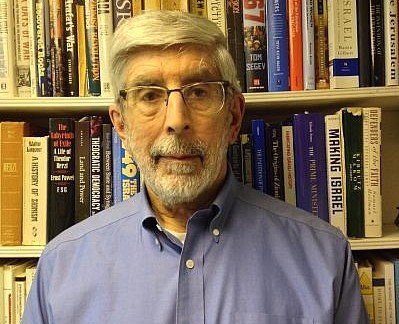Finding my Jewish self in a tale of two cities
I have occasionally been asked about my fascination with Hebron, burial place of the biblical patriarchs and matriarchs, the oldest Jewish holy site and the ancient Jewish kingdom’s capital city before its relocation to Jerusalem.
It was there that Abraham purchased the first parcel of land owned by the Jewish people in their promised land, which he used to bury his wife, Sarah.
Over time, a tiny and impoverished community of Hebron Jews managed to endure until an Arab massacre in 1929 emptied the city of Jews. Not until 1968, following the Six-Day War, did a group of Jews led by Rabbi Moshe Levinger return to Hebron to celebrate Passover and restore the Jewish community.
Several hundred Jews now live in a decrepit neighborhood adjacent to the flourishing Arab city that they are forbidden to enter. Except on Jewish holy days, they have restricted access, enforced by the Israeli government, to the magnificent Isaac Hall, centerpiece of the Machpelah tomb, where the patriarchs and matriarchs are interred.
I was oblivious to this history until a chance encounter with a former colleague who informed me of his trip to Israel — sponsored by the American Jewish Committee — for “disaffected” Jewish academics. I knew that I was qualified and so did the AJC. The trip proved to be a transformative life experience.
On our way to meet the Arab mayor of Hebron, our bus passed an enormous rectangular stone structure with high towers. What is that? I asked our guide. “Machpelah,” he replied. I was intrigued and determined to learn more.
So, I did, beginning a year later when I was Fulbright professor of American history at Tel Aviv University. I soon realized that I was learning as much about Jewish history as I was teaching about American history.
My colleague Haggai, my closest Israeli friend, was puzzled by my interest in Hebron, but he arranged for a friend to be my guide. On our drive south past Arab villages I was anxious, but comforted to notice that he had walkie-talkie nearby and a pistol within reach.
As my interest in Hebron increased, I was able to meet two of the founding fathers of the restored Jewish community, Rabbi Eliezer Waldman and lawyer Elyakim Haetzni. They became my best teachers and I was their riveted student, learning about Hebron’s Jewish history from those who had shaped its modern restoration.
In Jerusalem, where my family lived for two years a decade apart, I found myself inexplicably drawn to its most Orthodox community. Mea Shearim, one of the oldest Jewish neighborhoods outside the Old City, fascinated me, especially once I crossed Rehov Averbuch, a street named after Meir Auerbach, a former chief rabbi of Jerusalem who was one of the founders of the community in the mid-19th century.
Self-enclosed and insulated from the outside world, it resembled a European shtetl, providing a glimpse of what my grandparents left behind when they emigrated to the United States.
In the Old City, the Jewish Quarter was my magnet. I could sit for hours near the Kotel, watching the ebb and flow of Jewish worshippers.
But there was more than religious observance to fascinate me. I was intrigued by members of Ateret Cohanim, an organization dedicated to the reclamation of Jewish life outside the Jewish Quarter, where Jews had lived until their expulsion by conquering Arabs during Israel’s War of Independence. Evidence of their former presence was revealed by a nearby sign pointing to the Kotel HaKatan, the small wall that was an extension of the Western Wall, now once again a site of Jewish prayer.
I learned that following Israel’s victory in the Six-Day War, an Arab resident in a nearby building had handed the keys to the former yeshiva there to passing Israeli soldiers on their way to the Jewish Quarter. Torah scrolls and prayer books had been safely concealed in the yeshiva ever since the Arab conquest.
So it was that my time in Jerusalem and Hebron, spread across decades, enabled me to return to Jewish history in our ancient biblical homeland and revive my long-submerged Jewish self.

 59.0°,
Mostly Cloudy
59.0°,
Mostly Cloudy 





